Wooden pergola: advice on materials to use and useful information on building regulations and permits. Recommended plants. Deductions for renovations. Costs.
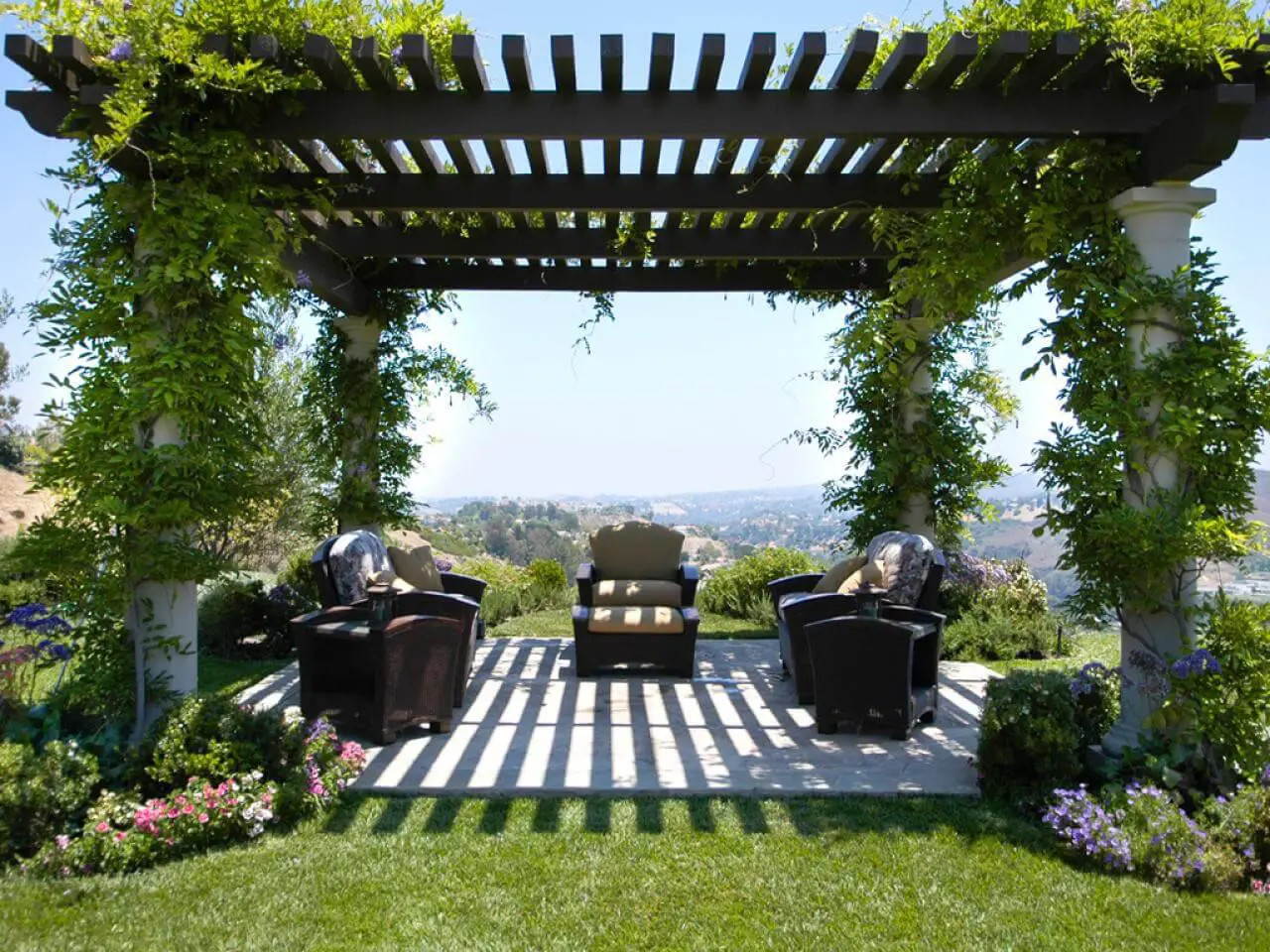
The pergola it is a functional decorative element for the home, as it allows you to have shady areas, which can be exploited according to your needs.
The pergola is a structure characterized by pillars which support a lattice of beams above, positioned transversely or longitudinally, which can host flowers or plants, or simply be left bare.

The pergola was born as an integral part of a rustic-type furniture, to then evolve towards elegant and essential minimal structures, which have become an integral part of modern homes.
Wooden pergola
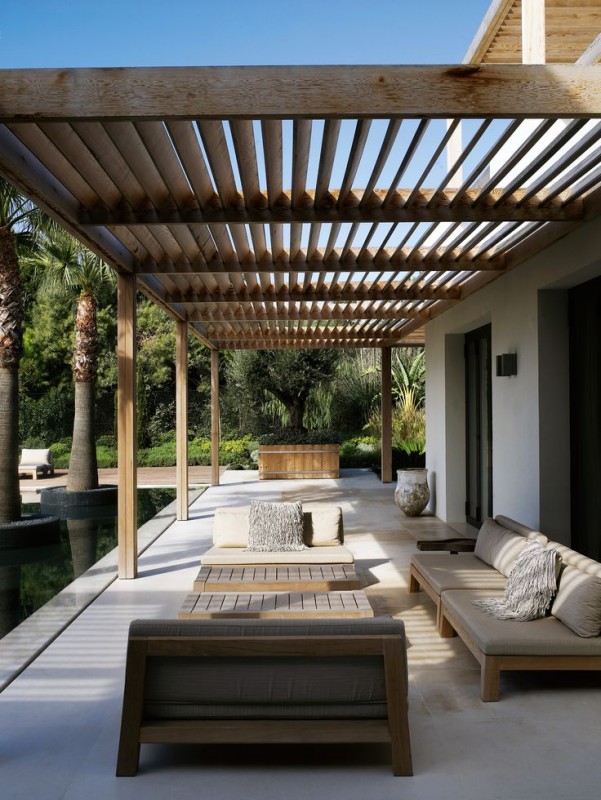
Read also: Patio or Corte: definition and differences with pergola and gazebo
The wood it is certainly the most used material for creation of pergolas.
This is because it is a natural material, characterized by simple and essential shapes, ideal for decorating any type of setting.
Specifically the type of wood used for the beams is the chestnut, as it turns out to be one of the most durable and weather resistant woods.
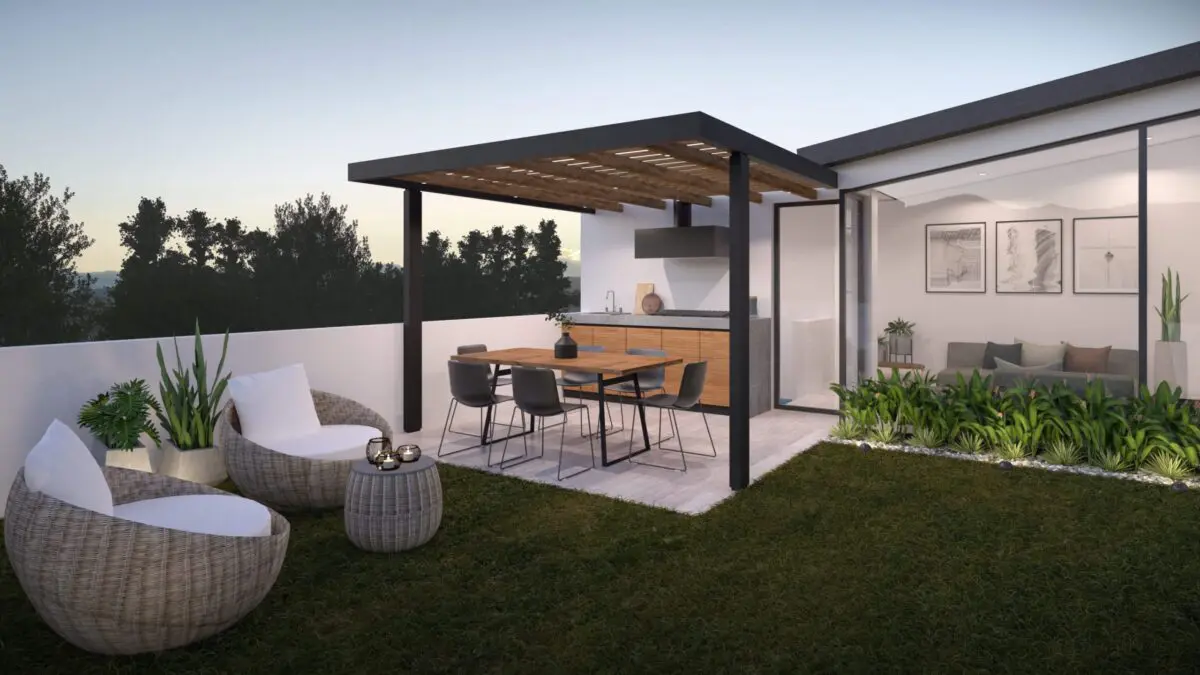
The Pine tree on the other hand, it is the most used, suitable for outdoor environments as it is easy to treat as well as the fact that large pieces are easily found on the market.
L’fir on the other hand, the cheaper one has the disadvantage of being on the market only with boards of limited thickness.
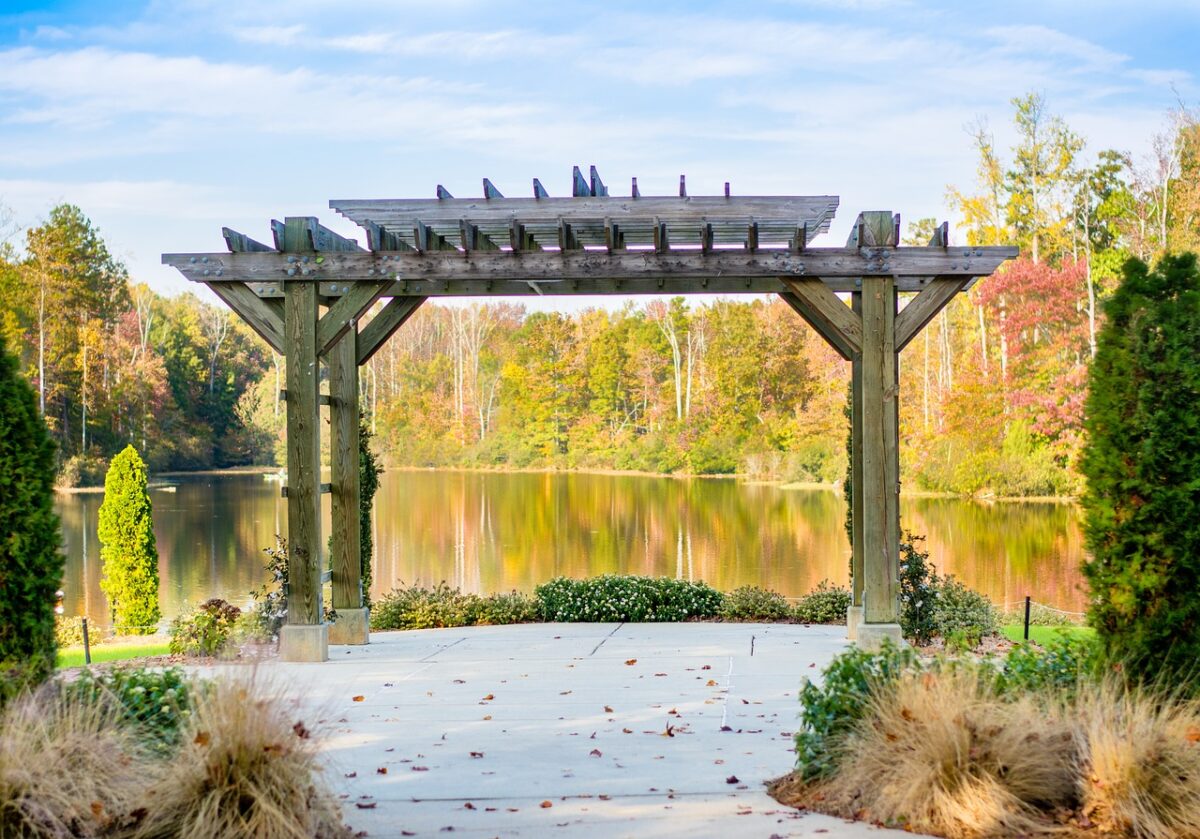
Obviously a pergola built in wood needs annual maintenance, for which it is necessary:
- Sand the wood
- Fill where necessary
- Sand again to make the surface smooth
- Pour in garden wood oil for better conservation over time.
Plants for the Pergola
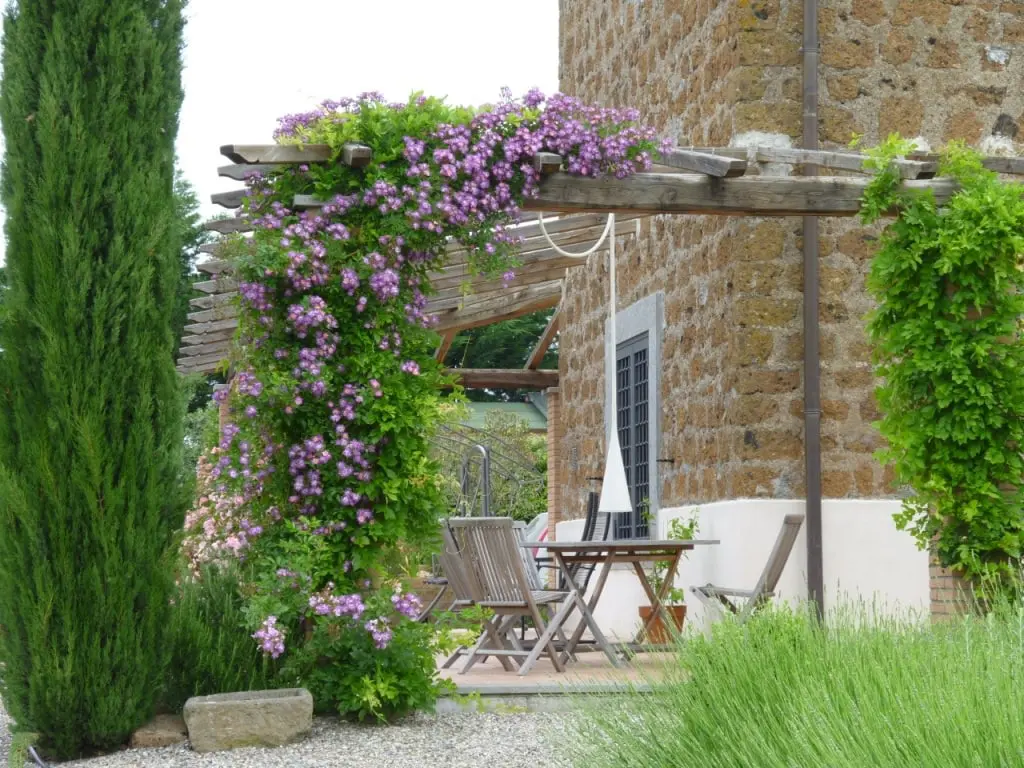
You may be interested in: Furnishing your home with patchwork: ideas and useful tips
Many of the climbing plants are to be considered suitable for decorating a pergola. But the plant par excellence that lends itself to the pergola is the lives, ideal for the Mediterranean climate of our latitudes. We will be able to enjoy at the same time the beauty of the colors and the goodness of its fruits.
The ivy boasts the fact of being very well known, being able to make us enjoy the shading, given by its dense coverage. It also requires little maintenance.
There bougainvillea it will be adored for its extreme variety of colors making it suitable for very hot climates.
For those who love an explosion of flowers, the jasmine it is one of those plants that will leave you amazed, giving in summer, above all, such a variety of scents to inebriate.
Do you want design advice on how to furnish? Join the group
How to cover the arbor
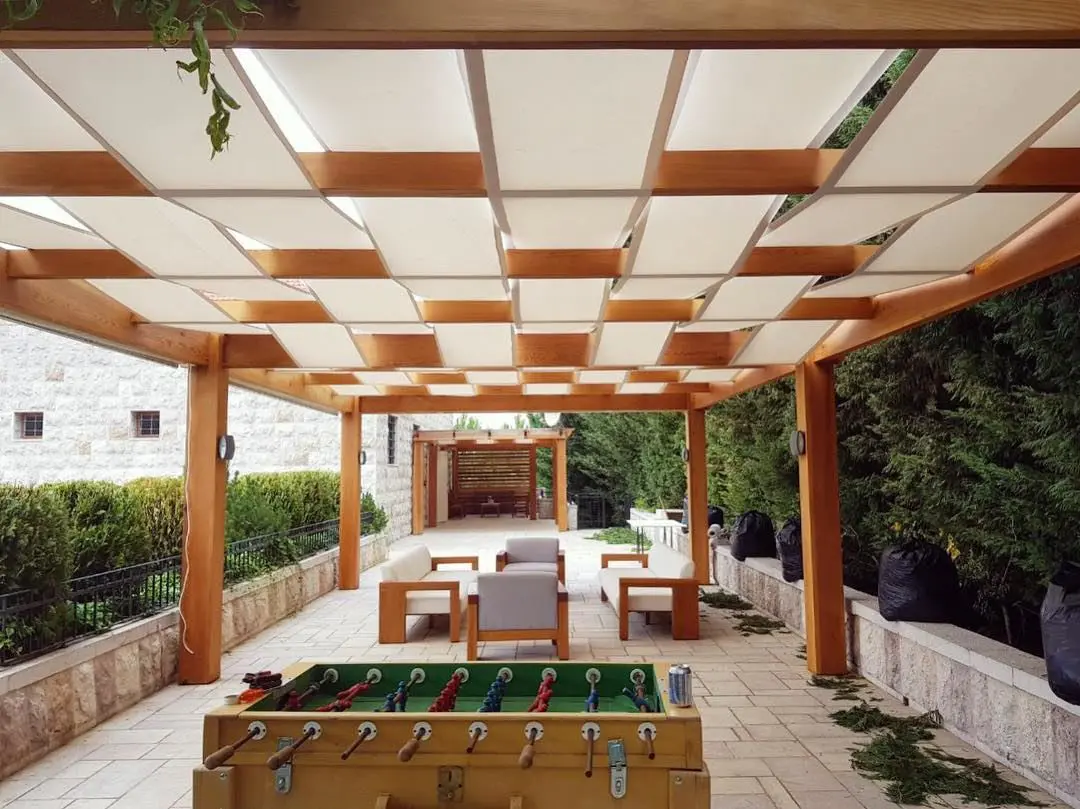
Plants are not the only way to cover the pergola if you want to enjoy the coolness in the warm months of the year, thanks to the shading that is created.
The cloth it remains the cheapest method, as well as the easiest to fix. The trouble is, it may not withstand the elements, such as sudden gusts of wind or severe thunderstorms.
The pvc sheet it is the option that guarantees good flexibility, being more resistant to gusts of wind and also waterproof.
The plexiglass has the privilege of transparency, thus being able to remain outdoors in the evening to admire the starry sky while during the day a certain resistance to sunlight is guaranteed.
Permit to build the pergola
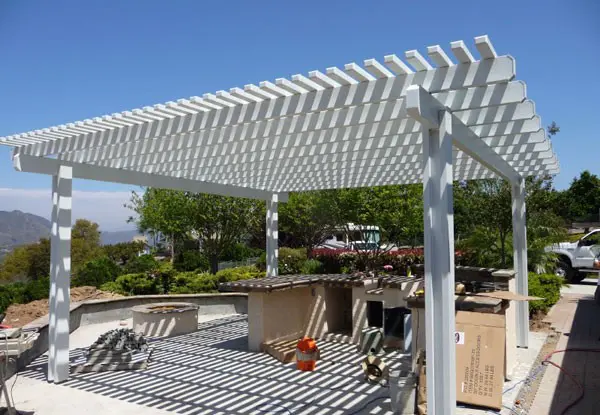
For make a pergola it is necessary to evaluate its characteristics and dimensions.
In fact, according to sentence no. 3972 of 29 July 2013, if the pergola consists of one light structure easily removable because it has no foundations and is intended for shelter and / or shading of surfaces of modest size building permit is not required.

On the contrary, the permission to build is necessary where thework is made up of pillars anchored to the ground and by wooden beams of important dimensions in order to make it solid and robust e not easily removable. The advice remains to rely on the designer and / or whoever will perform the work in order to have a clear project, to be presented to the building office of the Municipality in order to avoid incurring the crime of building abuse.
Wooden pergola: prices
The final cost of the work it depends on many variables. First of all the dimension of the pergola, with costs to rise obviously based on the size. The thickness of the boards that will make up the structure is a second factor to consider.
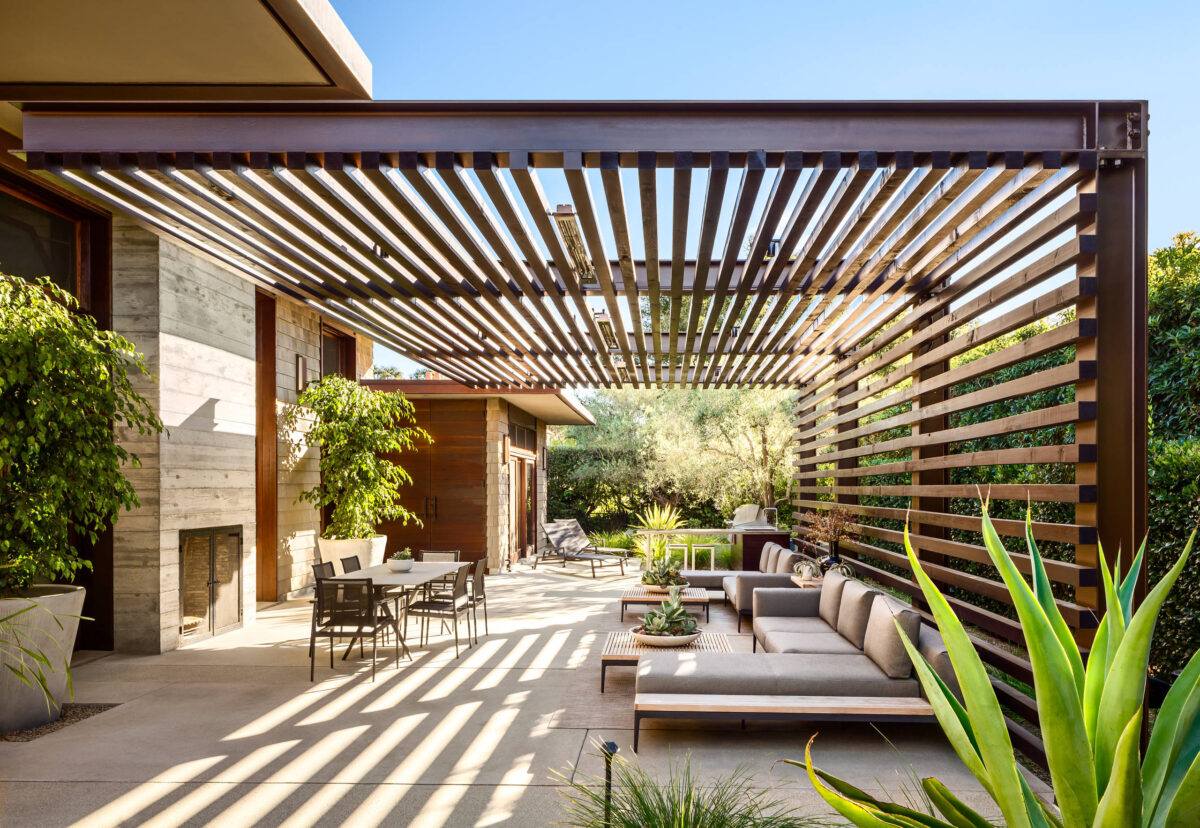
There quality of the material, especially when it comes to wood, it will be a priority if you want to spend a little more at the beginning, but with the satisfaction of seeing the structure beautiful for many years.
Finally, the real difference will be dictated by the fact of relying on an expert technician who will make you a project and consequent realization or whether to proceed with the do-it-yourself, moving towards a prefabricated model.
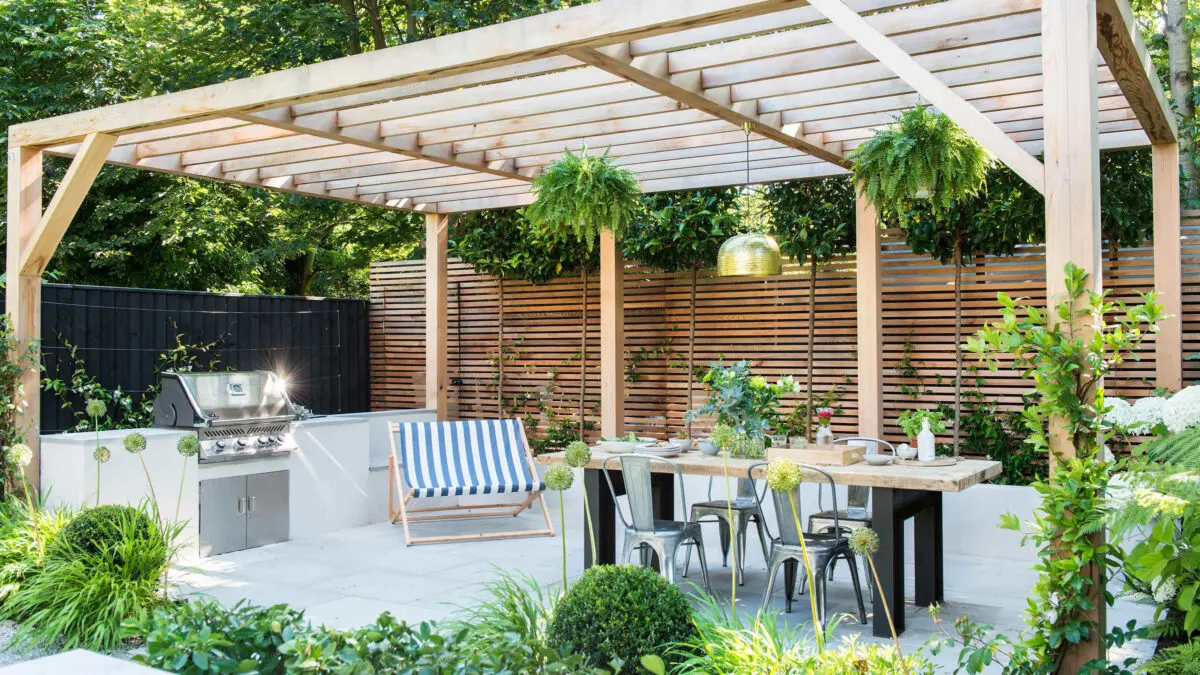
In this case, the cost range is quite wide, starting from € 200 to get to a model for which you could spend around € 3800.
Wooden pergola: tax deductions
Interesting is the possibility of proceeding with the construction of a pergola by taking advantage of thetax relief known as the Renovation Bonus. It is in fact a work that allows conservation as well as giving life to a building that has been partially modified and different from the previous one.
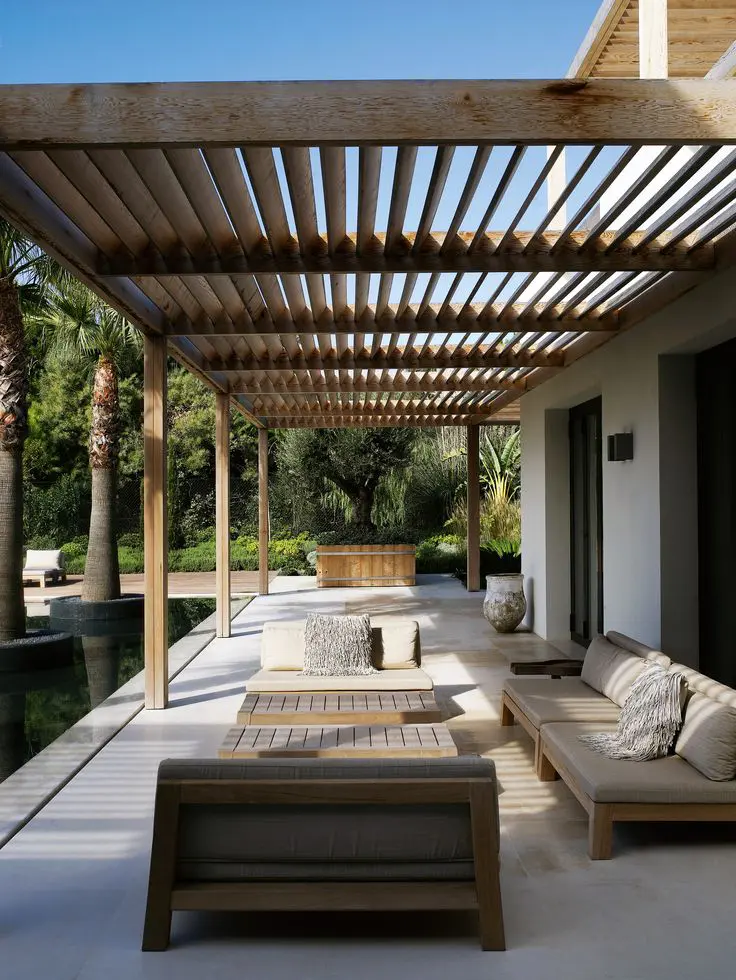
In this way the deduction amounts to 50% expenses relating to renovation works, up to a maximum amount of € 96,000, deductible in 10 equal annual installments.
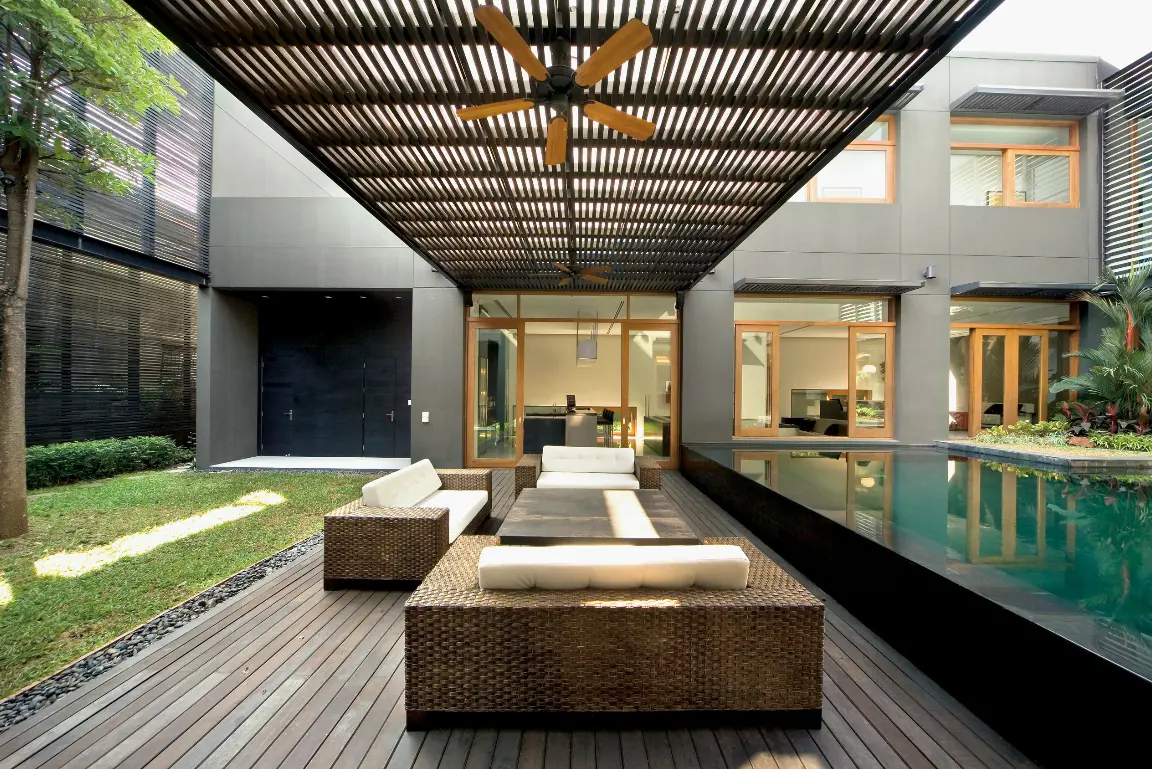
Wooden pergola: photos and pictures
Here are some examples of wooden pergolas from which to draw ideas for your terrace and garden.
Wooden pergola: advice on materials to use and useful information on building regulations and permits. Recommended plants. Deductions for renovations. Costs.

The pergola it is a functional decorative element for the home, as it allows you to have shady areas, which can be exploited according to your needs.
The pergola is a structure characterized by pillars which support a lattice of beams above, positioned transversely or longitudinally, which can host flowers or plants, or simply be left bare.

The pergola was born as an integral part of a rustic-type furniture, to then evolve towards elegant and essential minimal structures, which have become an integral part of modern homes.
Wooden pergola

Read also: Patio or Corte: definition and differences with pergola and gazebo
The wood it is certainly the most used material for creation of pergolas.
This is because it is a natural material, characterized by simple and essential shapes, ideal for decorating any type of setting.
Specifically the type of wood used for the beams is the chestnut, as it turns out to be one of the most durable and weather resistant woods.

The Pine tree on the other hand, it is the most used, suitable for outdoor environments as it is easy to treat as well as the fact that large pieces are easily found on the market.
L’fir on the other hand, the cheaper one has the disadvantage of being on the market only with boards of limited thickness.

Obviously a pergola built in wood needs annual maintenance, for which it is necessary:
- Sand the wood
- Fill where necessary
- Sand again to make the surface smooth
- Pour in garden wood oil for better conservation over time.
Plants for the Pergola

You may be interested in: Furnishing your home with patchwork: ideas and useful tips
Many of the climbing plants are to be considered suitable for decorating a pergola. But the plant par excellence that lends itself to the pergola is the lives, ideal for the Mediterranean climate of our latitudes. We will be able to enjoy at the same time the beauty of the colors and the goodness of its fruits.
The ivy boasts the fact of being very well known, being able to make us enjoy the shading, given by its dense coverage. It also requires little maintenance.
There bougainvillea it will be adored for its extreme variety of colors making it suitable for very hot climates.
For those who love an explosion of flowers, the jasmine it is one of those plants that will leave you amazed, giving in summer, above all, such a variety of scents to inebriate.
Do you want design advice on how to furnish? Join the group
How to cover the arbor

Plants are not the only way to cover the pergola if you want to enjoy the coolness in the warm months of the year, thanks to the shading that is created.
The cloth it remains the cheapest method, as well as the easiest to fix. The trouble is, it may not withstand the elements, such as sudden gusts of wind or severe thunderstorms.
The pvc sheet it is the option that guarantees good flexibility, being more resistant to gusts of wind and also waterproof.
The plexiglass has the privilege of transparency, thus being able to remain outdoors in the evening to admire the starry sky while during the day a certain resistance to sunlight is guaranteed.
Permit to build the pergola

For make a pergola it is necessary to evaluate its characteristics and dimensions.
In fact, according to sentence no. 3972 of 29 July 2013, if the pergola consists of one light structure easily removable because it has no foundations and is intended for shelter and / or shading of surfaces of modest size building permit is not required.

On the contrary, the permission to build is necessary where thework is made up of pillars anchored to the ground and by wooden beams of important dimensions in order to make it solid and robust e not easily removable. The advice remains to rely on the designer and / or whoever will perform the work in order to have a clear project, to be presented to the building office of the Municipality in order to avoid incurring the crime of building abuse.
Wooden pergola: prices
The final cost of the work it depends on many variables. First of all the dimension of the pergola, with costs to rise obviously based on the size. The thickness of the boards that will make up the structure is a second factor to consider.

There quality of the material, especially when it comes to wood, it will be a priority if you want to spend a little more at the beginning, but with the satisfaction of seeing the structure beautiful for many years.
Finally, the real difference will be dictated by the fact of relying on an expert technician who will make you a project and consequent realization or whether to proceed with the do-it-yourself, moving towards a prefabricated model.

In this case, the cost range is quite wide, starting from € 200 to get to a model for which you could spend around € 3800.
Wooden pergola: tax deductions
Interesting is the possibility of proceeding with the construction of a pergola by taking advantage of thetax relief known as the Renovation Bonus. It is in fact a work that allows conservation as well as giving life to a building that has been partially modified and different from the previous one.

In this way the deduction amounts to 50% expenses relating to renovation works, up to a maximum amount of € 96,000, deductible in 10 equal annual installments.

Wooden pergola: photos and pictures
Here are some examples of wooden pergolas from which to draw ideas for your terrace and garden.

